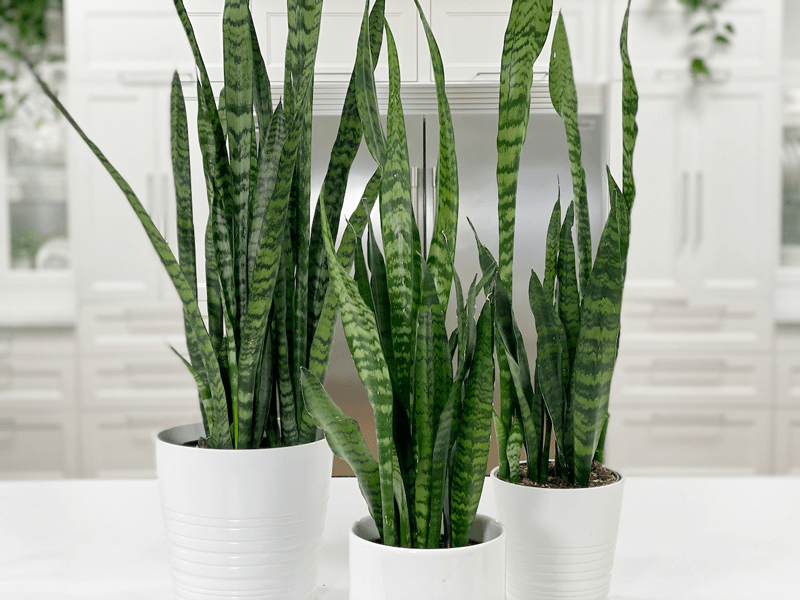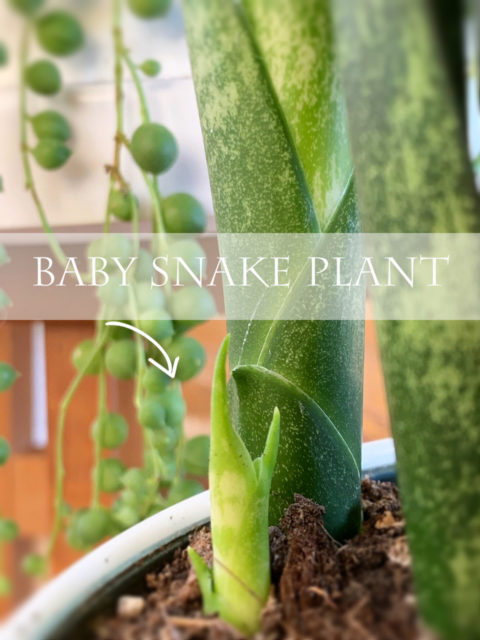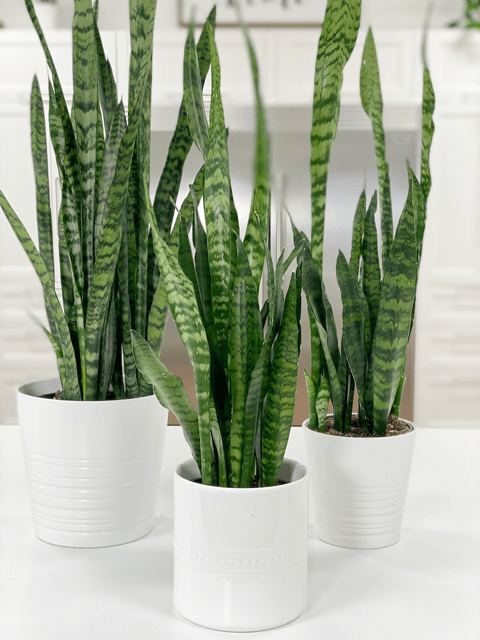

 Add to favorites
Add to favorites
The Sansevieria Black Coral is one of my favorites when it comes to snake plants. I love the shade of green it has, along with the subtle horizontal striping on each blade. The tall leaves (blades) are posture-perfect, standing tall and defining vertical spaces. If you love to decorate with plants, these are an interior designer’s dream plant. If you are one that doesn’t favor them due to their strong, bold look, tough, and pointed leaves… try adding some pothos plants around them to help soften their appearance. The contrast will create a wonderful plant vignette.

The Sansevieria Black Coral is just one of many snake plants. You can find them tall or short, with round, flat or concave leaves, and variegated with dark green, silver, light green, yellow, chartreuse, or white. Pick your favorite and run with it! I have about ten of these plants all around the house. Each one has unique markings and varies in size. My largest one is to the point where I can’t move it by myself! It is over ten years old. With a healthy environment, their leaves can reach up to 35″ inches long and 2.5″ inches wide.
Much to my delight, these plants can grace us with long flower spikes (which mine did). The flower stalk grows as tall as 3’ feet high and is covered in small, honeysuckle-like greenish, cream, or white flowers. They typically appear on mature plants, arising from the base of the spear-shaped leaves. The blossoms are richly fragrant and contain very sweet, sticky nectar, which appears as dew drops on the blossom stems. The blossoms close during the daytime and open after dark. And here’s another amazing thing… the blossoms transition into orange berries. Below are a couple of photos of the flowers that are currently on my more mature plant that stands about 5′ tall. So far, I have counted 5 flowers on the one plant.
 Water Requirements
Water RequirementsEasy does it with the watering. You want to be careful not to overdo it, because your plant will rot out. Always make sure the soil is almost completely dry before thoroughly watering again. Size and location depending, you will end up watering your snake plants every 2-6 weeks. If you travel or tend to ignore plants, this is the one for you. But don’t ignore them TOO long; nobody really likes to be ignored, whether human or plant.
Even though Sansevierias prefer medium light, they’ll also tolerate low light and high light. The main thing you need to watch for is DIRECT sunlight. No houseplant does well in those conditions, because the leaves can burn. So, as you can see, this plant gives you many placement options.
Sansevierias will tolerate a wide range of temperatures in our homes. They can hang out in temperatures ranging between 55 – 85 degrees (F). Temperatures below 55 degrees (F) can cause them harm.
Fertilizer isn’t necessary but may encourage brighter colors and faster growth. You can feed the plant once a month spring through fall with a diluted fertilizer that is specially made for succulents. Skip feeding during winters when the growth is slow.
Diagnosing what is going wrong with your plant is going to take a little detective work, but even more patience! First of all, don’t panic and don’t throw out a plant prematurely. Take a few deep breaths and work down the list of possible issues. Below, I am going to share some typical symptoms that can arise. When I start to spot troubling signs on a plant, I take it into a room with good lighting, pull out my magnifiers, and begin by thoroughly inspecting the plant.
 Brown tips
Brown tipsIf you want to have healthy house plants, you MUST inspect them regularly. Every time I water a plant, I give it a quick look-over. Bugs/insects feeding on your plants reduces the plant sap and redirects nutrients from leaves. Snake plants are highly pest-resistant, but in poor conditions, they can get mealybugs and/or spider mites. The biggest threat is fungal growth due to root rot. If the plant receives too much water or grows in soil with poor drainage, the fungus may start to appear near the base of the plant.
I came across one instance where I had little worm-like bugs at the bottom of the cover pot. These creatures made their way through the soil and out one of the drain holes. In this case, I made up a hydrogen peroxide solution and poured it through the soil, making sure to saturate it. You can read about it (here).

While the toxicity levels are low, it’s safest to keep pets away from your plant. It can cause excessive salivation, pain, nausea, vomiting, and diarrhea.